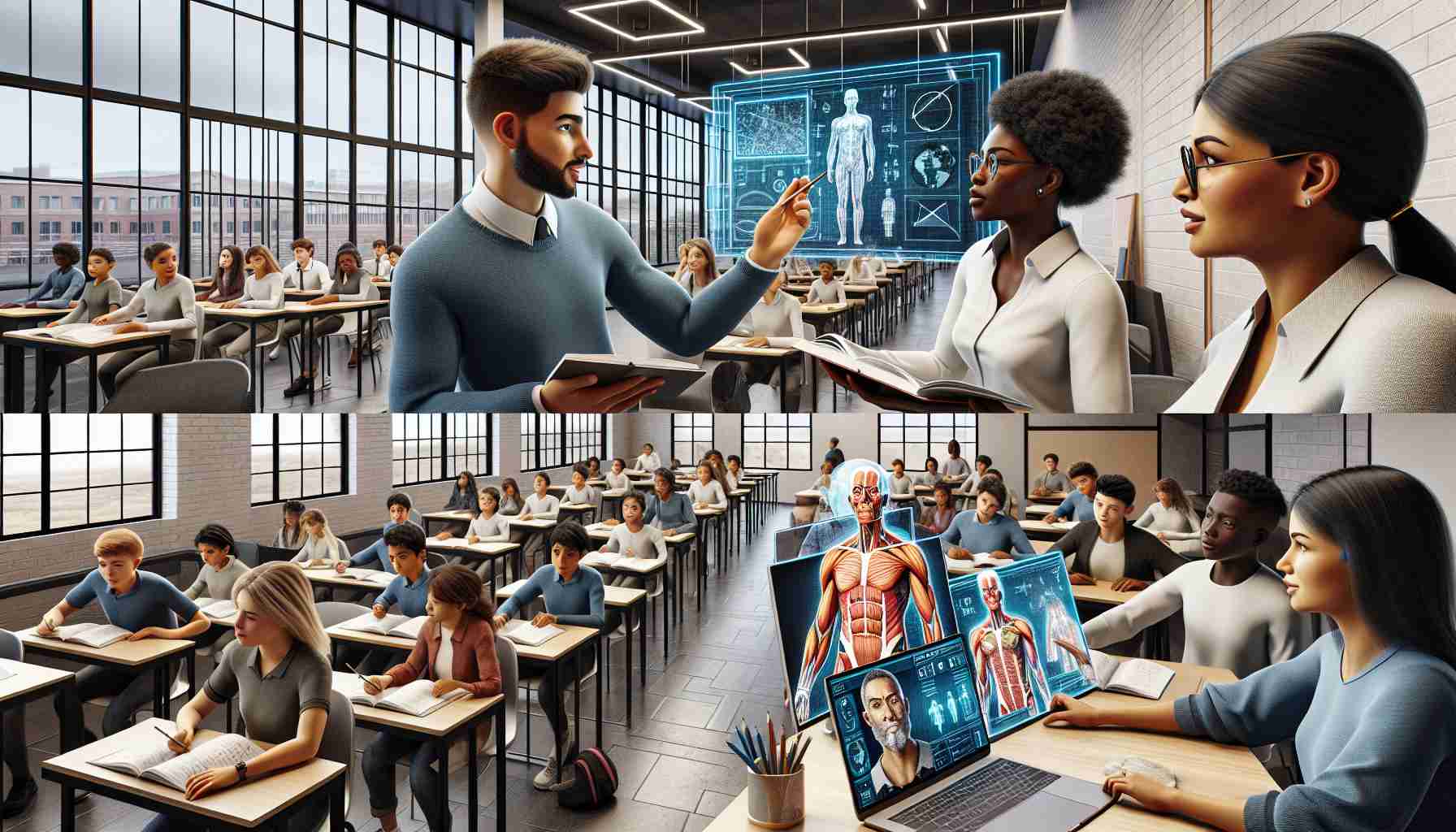The majority of Brazilian educators support the integration of technology and artificial intelligence in the classroom, signaling a shift towards embracing digital tools for educational purposes. This perspective was derived from a groundbreaking study conducted by the Semesp Institute, which advocates on behalf of higher education institutions.
The study, which canvassed teachers from public and private schools across Brazil, took place from March 18 to 31, 2024, and encompassed early childhood through secondary education. It revealed that 74.8% of teachers are somewhat or fully in agreement with employing technology and AI in educational settings. Yet, only about one-third consistently utilize these tools in their classrooms.
Teachers acknowledge the value of modern technologies in education but report structural and pedagogical barriers that impede their effective use. Lack of internet connectivity in schools, insufficient training for teachers, and difficulties in maintaining student engagement are some of the obstacles faced.
One educator pointed out that students have grown increasingly reliant on instant information and search tools, displaying a significant reduction in patience and problem-solving abilities. Another voiced concerns about inadequate access to technology in schools, citing poor internet quality, limited computer lab access, and the impracticality of mobile devices due to lack of student internet.
Regarding technology access, 45.7% of teachers indicated their schools were equipped with necessary technologies, whereas 7% reported a complete absence of such resources in their educational settings.
The presence of technological devices also appears to contribute to student distraction, with one teacher suggesting an inability of schools to keep pace with new tech as swiftly as students do, leading to a mismatch in educational delivery versus student expectations.
Interest in Technology Education Amongst Youth
The study is a segment of the 14th edition of the Map of Higher Education in Brazil, focusing on the academic landscape and prospects of Bachelor’s degree programs.
The data indicated a strong youth preference for careers in computing and information and communication technologies, with computer science ranking highest among desired higher education pursuits. Technical training initiatives were proposed to bridge the gap for high schoolers approaching higher education, aligning with a government-sponsored financial incentive program aimed at reducing dropout rates and promoting college enrollment.
Key Questions and Answers:
1. What are the primary challenges that Brazilian educators face when integrating technology and AI in education?
– Challenges: Lack of internet connectivity in schools, insufficient teacher training in digital tools, student engagement problems, limited access to up-to-date technologies, and the students’ diminishing patience and problem-solving skills due to reliance on instant information sources.
2. How does the accessibility of technological resources in Brazilian schools vary?
– Availability: 45.7% of teachers reported their schools had the necessary technologies, while 7% faced a complete absence of such resources.
3. What is the impact of technology on student behavior in the classroom?
– Impact: Increased instances of distraction and a potential mismatch between educational delivery methods and student expectations.
4. Why is there a strong interest among Brazilian youth in technology education?
– Interest: The prospects of successful careers in the booming fields of computing, information, and communication technologies are likely driving student preferences.
5. What initiatives are being proposed to support the transition of high school students into higher education in technology fields?
– Initiatives: Technical training programs and government-sponsored financial incentives are planned to reduce dropout rates and encourage college enrollment.
Advantages and Disadvantages of Technology in Education:
Advantages:
– Enhances learning through interactive and engaging tools.
– Provides access to a vast array of resources and information.
– Prepares students for a technology-driven future in the workforce.
– Facilitates personalized learning and accommodation of diverse learning styles.
Disadvantages:
– Can lead to increased distraction among students.
– Requires significant investment in infrastructure and continuous updating.
– Exacerbates the digital divide if access to technology is not equitable.
– Demands ongoing professional development for educators to effectively integrate technology.
Controversies and Debates:
– The digital divide and inequality in technology access can perpetuate socioeconomic disparities in education outcomes.
– There are concerns regarding data privacy and security with the use of AI and online learning platforms.
– The potential decline in critical thinking and problem-solving skills due to over-reliance on technology is debated.
For those interested in further exploring the topic, here are some related links:
– UNESCO: For global perspectives and initiatives on education and technology.
– The World Bank: For information on educational technology investment and policies around the world.
– OECD: For reports and statistics on education, including the use of technology in classrooms.

